
The Hydor Koralia EVO 4400 is a movement pump for aquariums up to 440 liters. Let’s look at it together in our review.
The movement of the water supports the Berlin method, which we believe is the basis for correct functioning of any aquarium, whether it hosts corals or just fish. The movement provides correct oxygenation of the whole tank, keeps debris being deposited in the corners of the aquarium to rot, brings food to all the polyps of the corals, helps corals clean up their mucus, and allows the fish to swim against the flow to strengthen their muscles and maintain good health. So, it’s a fundamental element for any aquarium.
But speaking of movement, we usually tend to focus on very sophisticated movement pumps, and so we’re excited to showcase a pump that makes simplicity its strong point.
The presentation video of the Koralia Evo 4400
As usual we want to present you the Koralia Evo 4400 in our video review, so that you can get an even better idea than just looking at pictures. The video is in Italian, but you can activate subtitles and then choose English.
Technical characteristics of the Koralia Evo
The Koralia Evo is a family of three pumps specifically designed for large aquariums. Let’s see their technical characteristics.
| Rate | Consumption | Suggested volume for freshwater | Suggested volume for marine | |
| Koralia Evo 3200 | 3.200 l/h | 4 watt | 180-370 liters | 112-200 liters |
| Koralia Evo 4400 | 4.400 l/h | 4,5 watt | 250-500 liters | 160-275 liters |
| Koralia Evo 5600 | 5.600 l/h | 5 watt | 350-650 liters | 208-385 liters |
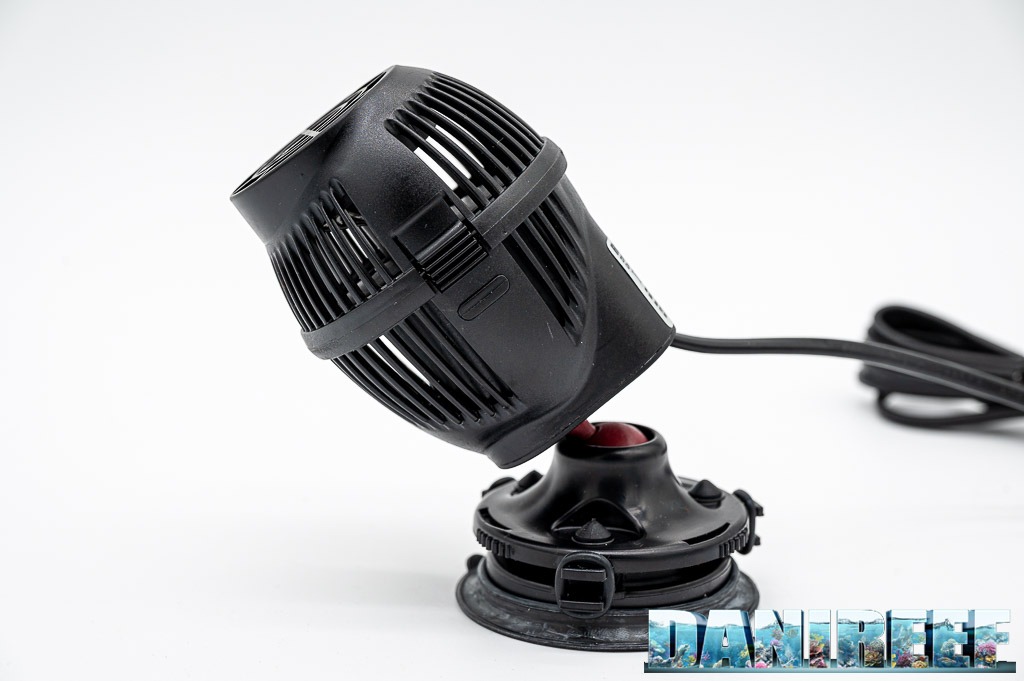
Why we trust Hydor’s declared rate
We all know how difficult it is to measure the flow rate of a movement pump. And if you never thought about it, we’re happy to explain: when you have a return pump the operation is pretty easy, because you only have to buy a flow detector, like our DigiSavant DIGIFLOW 6710M, that goes inside the output pipe and, aside from various lacks and frictions, you’re done.

But when you have a movement pump everything gets more complicated. Every company has experimented with a different method of measurement. Back in 2011, some companies had some quite extravagant methods of calculation, like, for example, placing a plastic bag in front of the pump and measuring the time it took to fill it. For this reason, years ago, research was conducted in collaboration with Penn State University and sponsored by Ecotech Marine, that scientifically measured the flow rate of every movement pump sold in 2011.
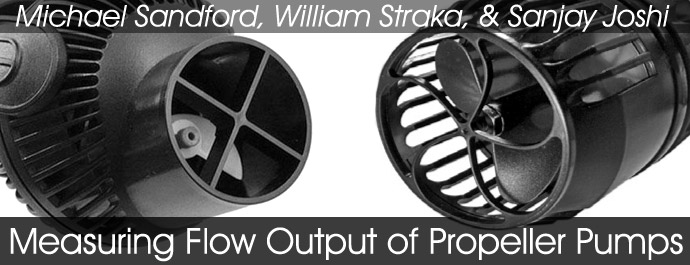
At that time, we wrote an article about this new method (it was the italian “Tunze e Vortech… qual’è la reale portata delle pompe? E quanto questo è realmente importante?”) with all the data gained from the study, but I’ll highlight the results we are interested in: the Hydor Koralia 5, 6, 7 and 8 had the values most in line with what declared. Even for the small Koralia 5 the measured value was significantly higher than the declared one.
Since we don’t believe that Hydor changed its measuring methods since then, we are reasonably certain that the declared values for this Koralia Evo, as well as for the whole line, are accurate.
The contents of the package
The package contains the pump, the instructions, and the warranty, and also a very useful accessory of which we should pay more attention to.
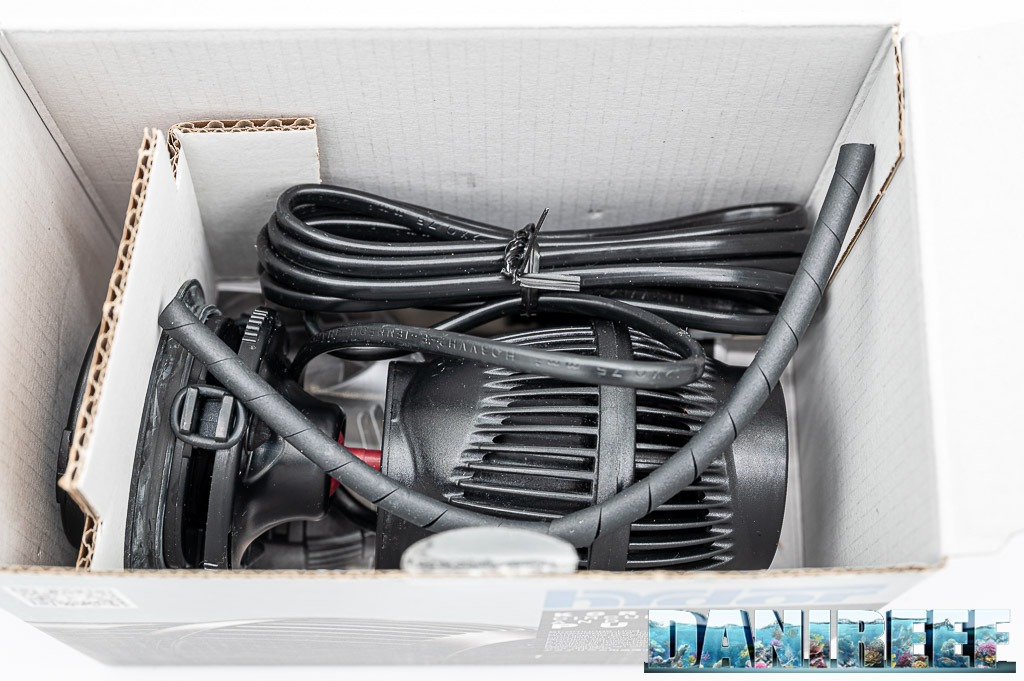
The small plastic pipe that you see on top of the package, and that we picture below, is a very useful tool to preserve the supply cable. In fact, in our aquariums, we often host snails and fish that can damage soft plastic cables. With time, they could also damage the sleeve that covers the cable. For this reason use this sleeve on the cable, next to the pump, and this little attention could preserve it for years and years.
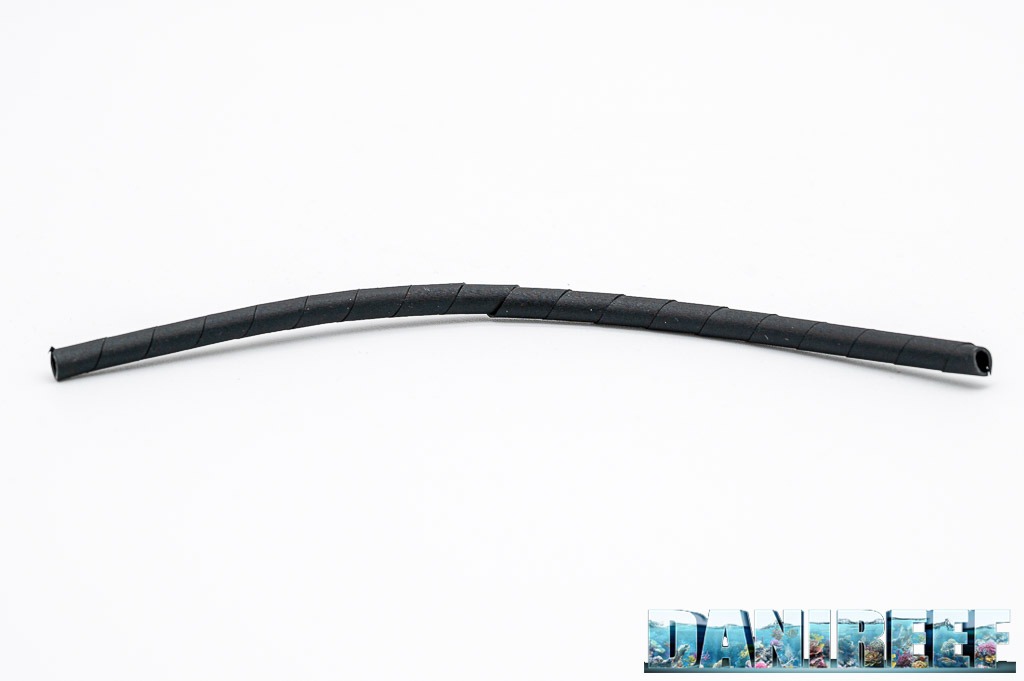
It works with 15 mm thick glass
The Koralia Evo can be used on glass up to a maximum of 15 mm of thickness. And all thanks to this great invention of Hydor, the magneto suction cup. Anyone that regularly visits our channel knows how I appreciate this small invention (which is a Hydor patent).

The magneto suction cup, as the name itself suggests, is a system that pairs a suction cup and a magnet. In the picture you can see the two parts of the magneto suction cups, and separating them wasn’t an easy job, since one magnet is strong enough for glass up to 15 mm thick. This system, besides assuring a very strong grip, can also eliminate vibrations and make the pump extremely silent. There are also 3 rubber pads that support the pump from the stand, blocked by 3 small rubber o-rings. The result is absolute calm in the aquarium.
Another point in favor of this magneto suction cup is the fact that the base has a sphere connected to a peg grafted into the body pump. In this way the pump can be directed everywhere. Sure, this system is less compact, but this is all space that we need to orient the pumps.
The suggested aquariums:
If we consider the nominal flow rate of 4.400 l/h, a couple of these pumps would be perfect for an average marine aquarium with fish and soft corals or LPS up to 440 liters, since we want movement of 10 times the volume of the aquarium provided by two alternating pumps. If we use them in aquariums with hard corals (SPS), the volume should be about 220 liters.

In freshwater aquariums, these numbers can be transferred until you reach about 800 liters, due to the lower demand for movement that a freshwater aquarium has compared to a marine one. Are these numbers different from the ones declared by Hydor? Not really. In fact, Hydor considers the performance of a single pump, while I considered a pair. So, if you double Hydor’s values you’ll find more or less the ones I said.
We believe that pumps should always be used in couple and, if you are unsure about how to place them, check out our article with an explanatory video (in Italian): “How to position a wave pump in marine aquarium – a guide“.
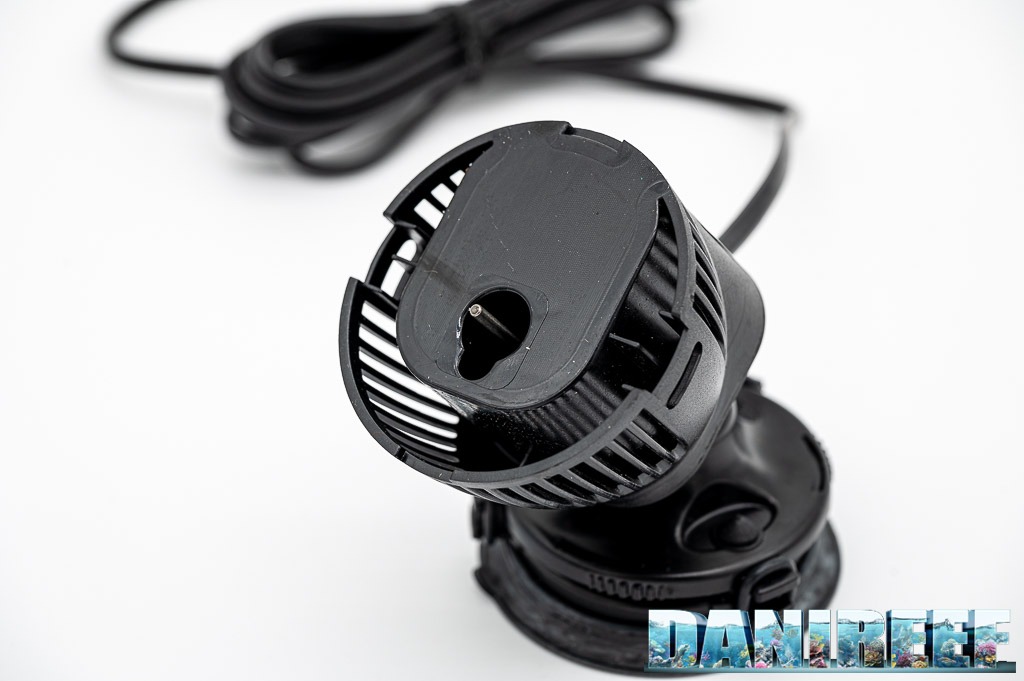
The impeller of the pump is a classic double helix impeller. The upgrade is a small plastic plate inserted between the helix and the magnet and is used to hold it in place. The impeller fits very easily into its plastic graft, which continues the body pump.
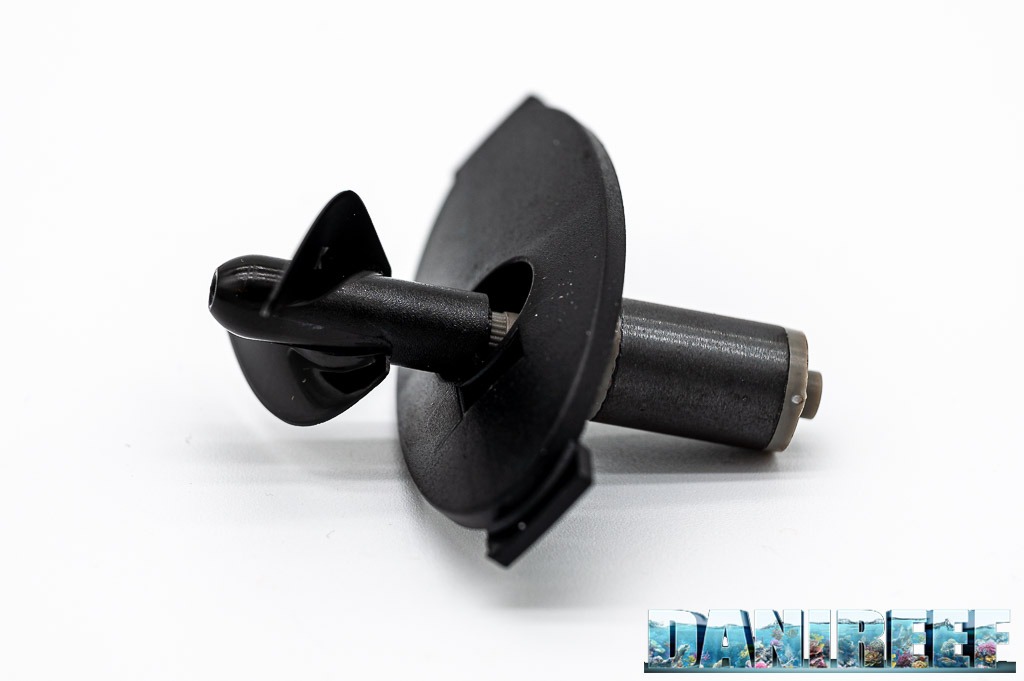
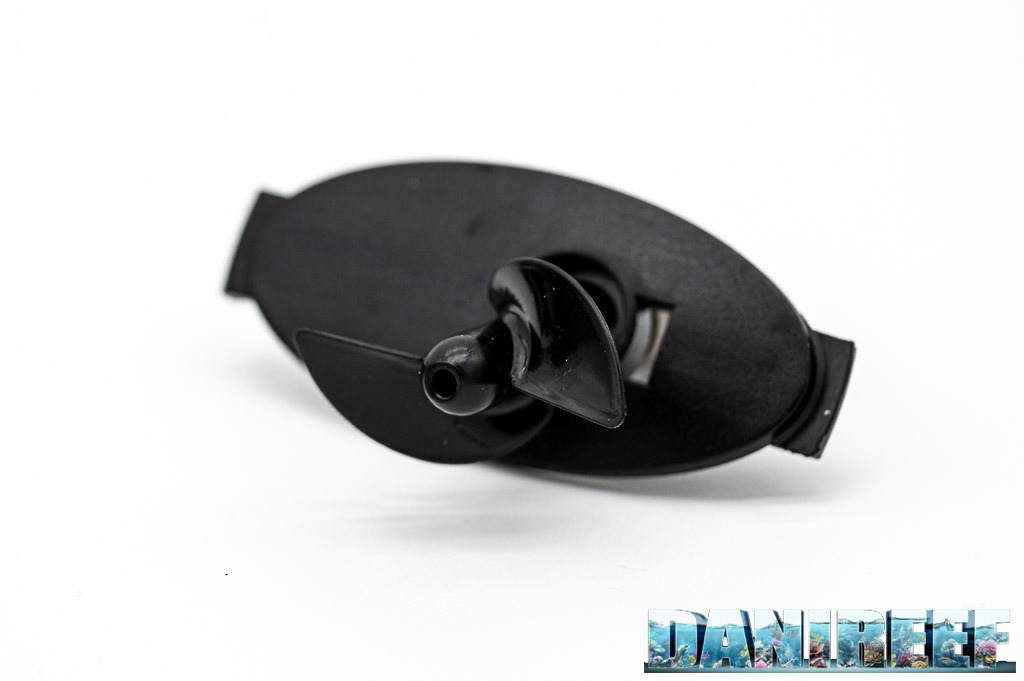
The assembling and the disassembling of the pump are two very easy operations. To remove the shell you only have to press the two buttons you see in the picture below and in a few seconds the pump is free.

Hydor Koralia Evo: our final comment
As we said in the opening, movement equals life in the aquarium. So, this isn’t something we can bypass. Once we find the right size and place we’re done. If we could also use a couple of extremely affordable pumps like the Hydor Koralia Evo in this review it would be even better, wouldn’t it? The pumps cost 61 euro on the producer’s site (here) and a bit less on Amazon (sponsored link, purchasing through this link we could have approved a percentage, but your price won’t change).
If you have a marine or freshwater aquarium that needs motion, and you aren’t interested into a flow controller, these are the pumps you need. Absolutely silent and with 4.400 liters of flow rate generated by only4,5 watts. The flow is wide and gentle, great for our aquariums, but also ecological, given the low consumption. They move 1000 liters per watt, an amazingly high value. They’re a big step up from Vortech, which has a consumption of 1 watt per 500 liters: for the same amount of water they have double the power consumption.
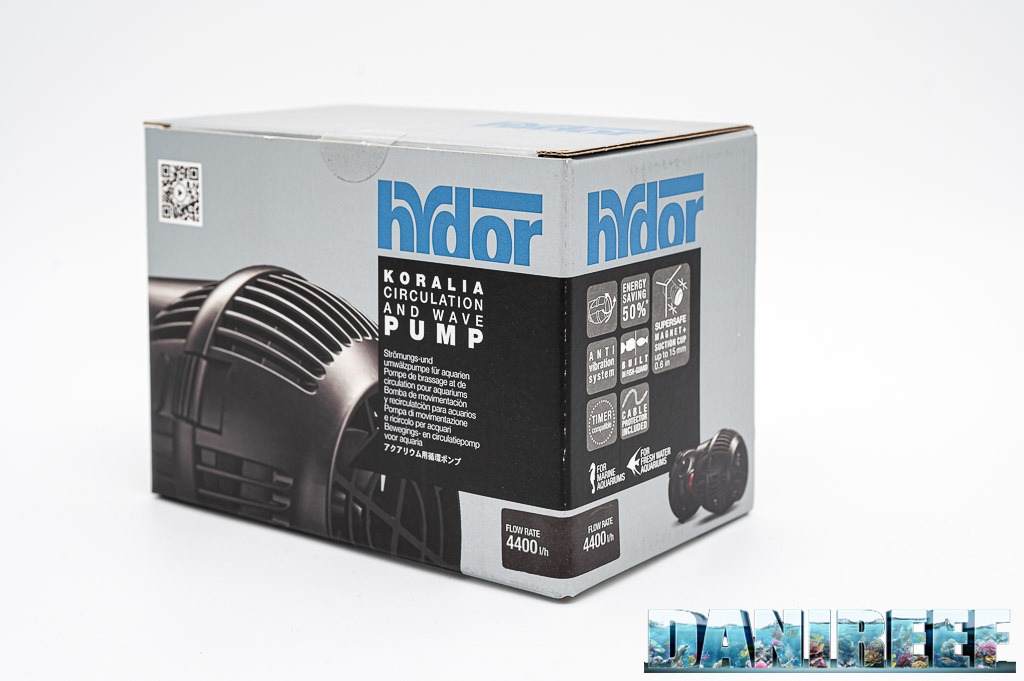
The price is reasonable, especially considering the flow rate; the only reason you wouldn’t want to buy them is if you prefer actively regulating the flow. But remember that up until recently, there weren’t controllers and the aquariums were beautiful anyway.
In summary: high flow rate, low power consumption, total silence. What more can we ask for from a movement pump?

PROS
![]() Very easy maintenance;
Very easy maintenance;![]() Magnet suction cup system;
Magnet suction cup system; ![]() Very silent;
Very silent;![]() Ridiculous consumption, 1 watt per 1000 l/h;
Ridiculous consumption, 1 watt per 1000 l/h;![]() Suitable for glass thickness up to 15 mm;
Suitable for glass thickness up to 15 mm;![]() Wide and gentle flow;
Wide and gentle flow;![]() Direction able.
Direction able.
CONS
![]() Space;
Space;![]() The pump isn’t adjustable;
The pump isn’t adjustable;

Disclaimer: we thank Hydor for proving us with the Koralia Evo 4400 for this review.









0 Comments